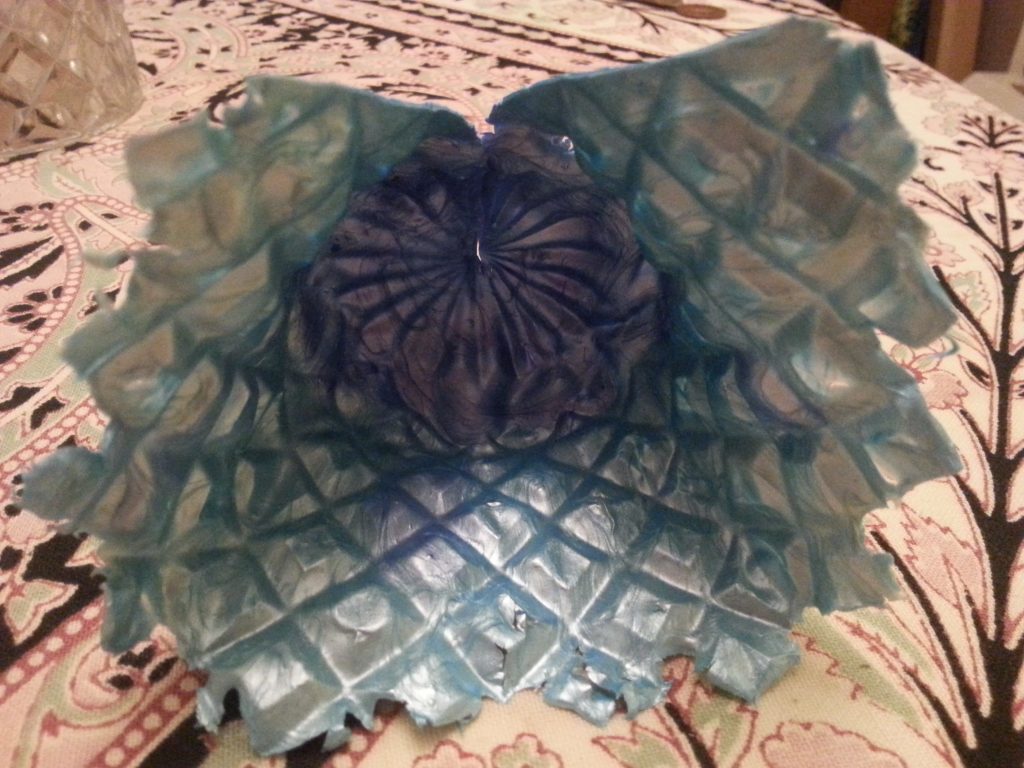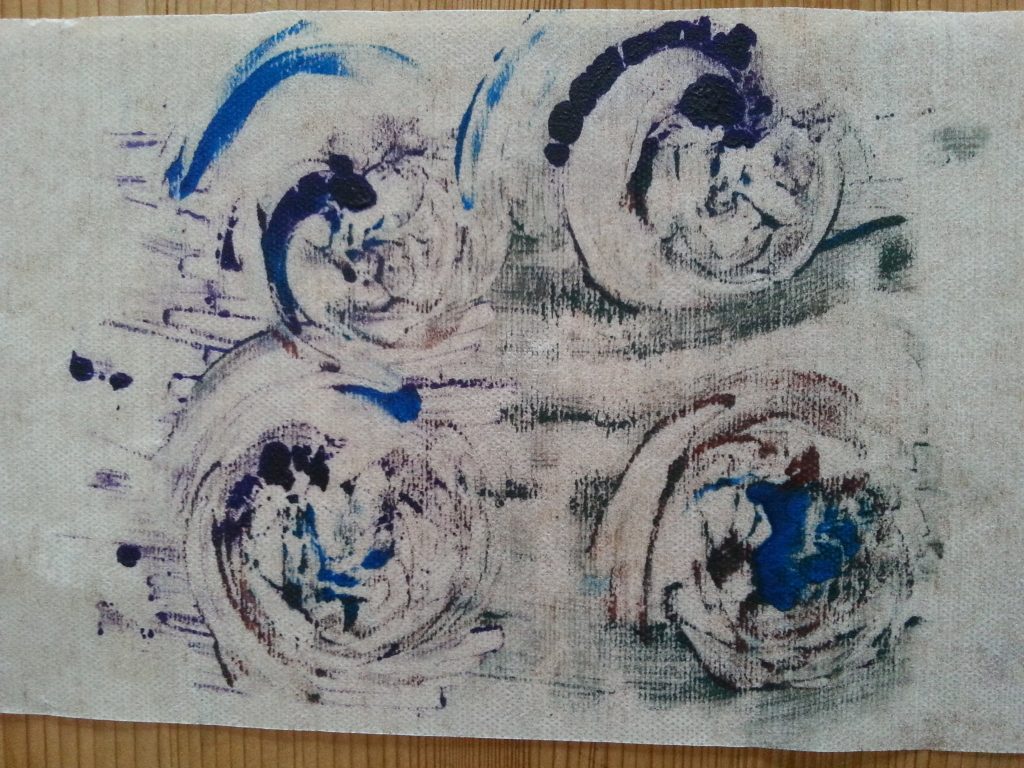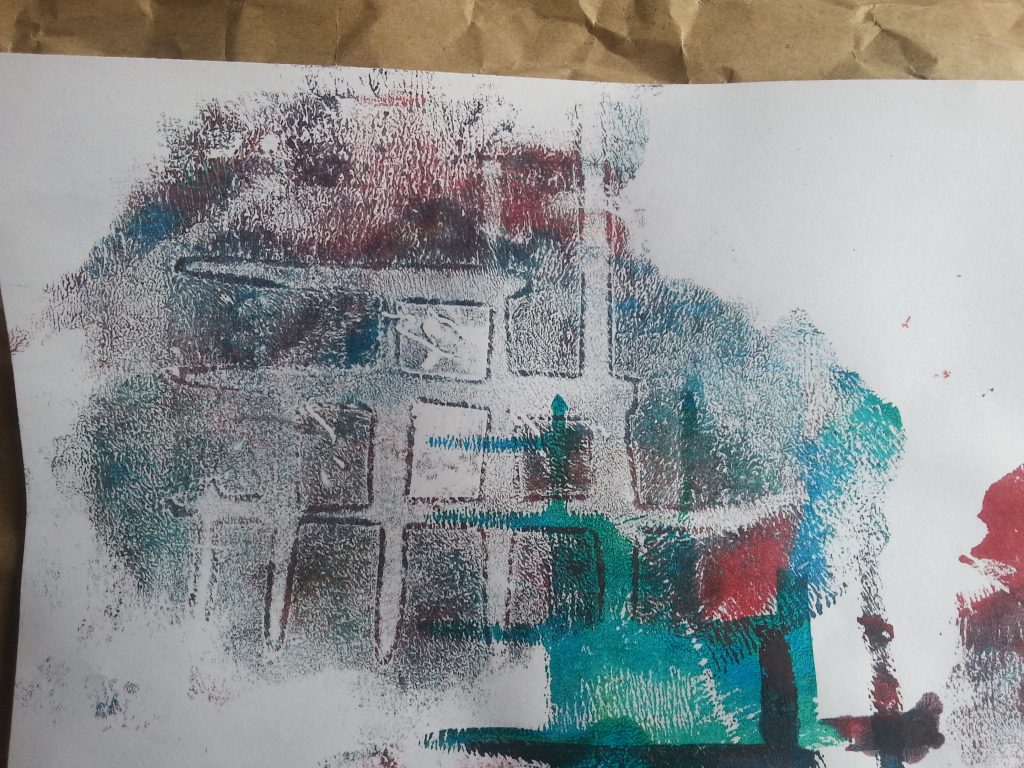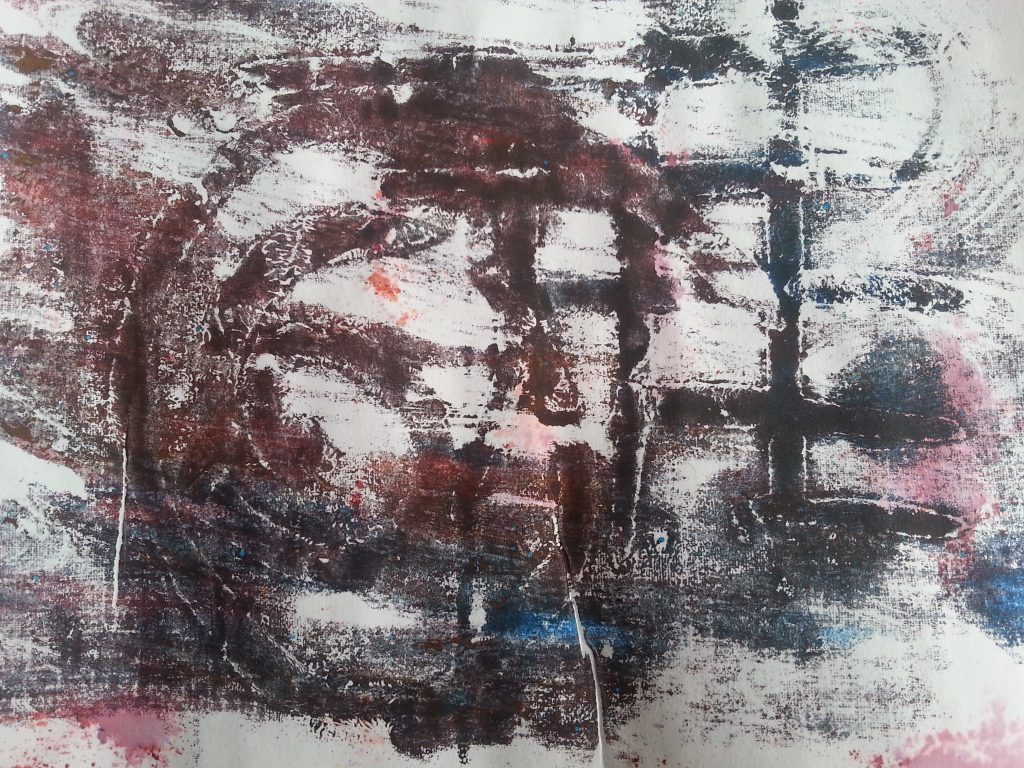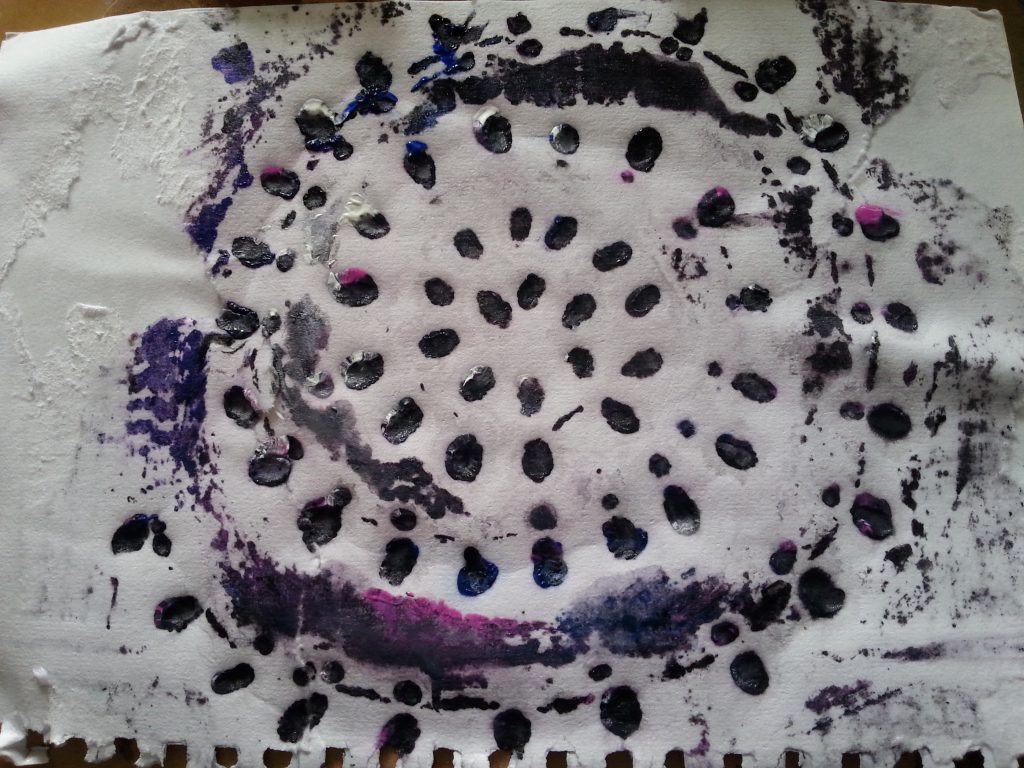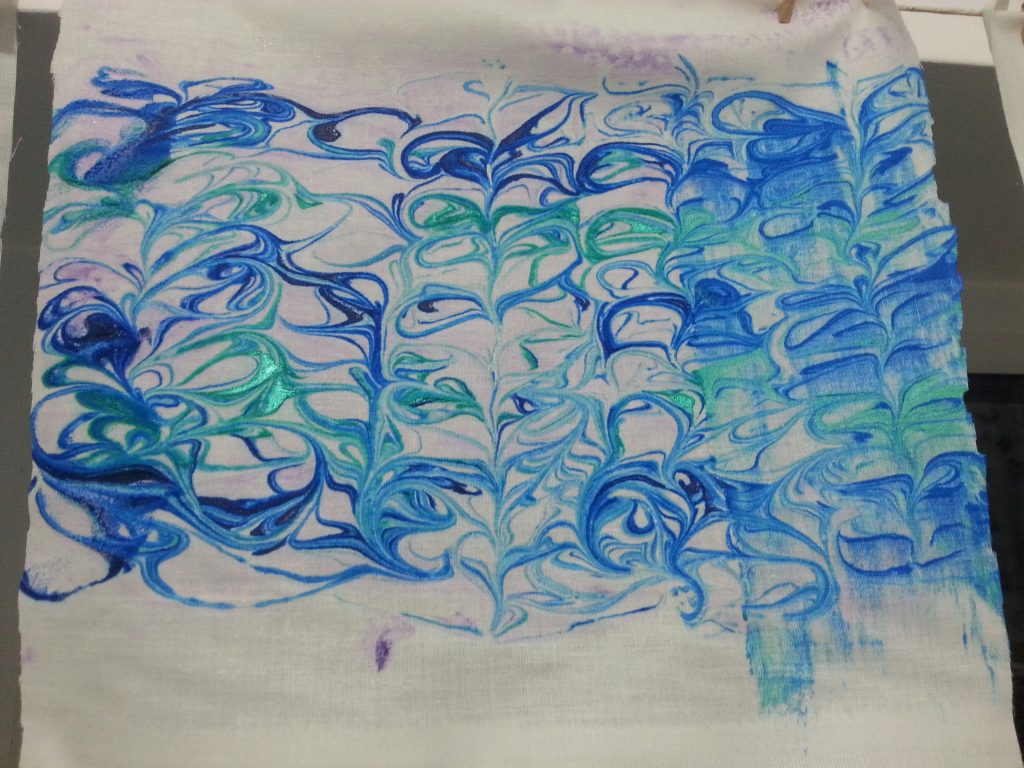Conclusion
Note: The review process has proved to be quite long so I’ve split the analysis into two parts, Assignments One & Two here and Assignments Three & Four here. I’ve also moved the conclusion to the top of the post and included it with both posts for ease of reading.
Going back through the work for this module threw up some interesting surprises. It struck me that I’d made note of lots of ideas as I worked through the exercises, some of which run through the whole module and are still ‘live’, some of which I’d almost forgotten about entirely. Pulling them together as a whole, I can see how some of the later exercises could be used to develop earlier ideas and how the earlier exercises have informed work done later in the module.
There are some clear recurring themes, with spirals, texture and colour featuring strongly. My background in felting and dyeing are undoubtedly strong influences coming through for texture and colour. The spirals have been something I’ve loved for years. I have old exercise books liberally ‘enhanced’ with spirals going back to primary school! The weaving examples worked towards the end of Assignment Two have directed me towards some very promising research into ideas for small-scale woven and mixed technique projects.
Revisiting the exercises also led me to research a number of new techniques, artists and ideas. Artists can be found here, techniques and ideas here.
Review
For the review I decided to work through the exercises in a fairly systematic way to make sure I covered all the possibilities, keeping an open mind and making no assumptions about what did and didn’t work for me. All exercises have been reviewed but I have only selected here and in the related post, those that really spoke to me in one way or another.
These and the samples from Assignments One and Two will be combined with further sampling, review and research to take forward to the final prototype.
Assignment Three – Moulding
Moulding from a Surface
- Moulding over a bowl with PVA and Yarn
- Moulding over a bowl with PVA and Yarn
- Moulding over a bowl with PVA and Yarn
This sample was not one of my favourite pieces as the PVA proved too shiny and the fabric lost a lot of its delicate texture. However, I enjoyed the technique very much and would like to re-visit it with different fabrics, addition of texture, stitching and embellishment. I have also since worked with mod-podge which is a matte-finish medium that works more harmoniously with fabrics.
- Moulding from a surface – soft form relief paste
- Moulding from a surface – soft form relief paste
- Moulding from a surface – soft form relief paste
- Moulding from a surface – soft form relief paste
One of my favourite discoveries in this module was how effective moulding paste is at capturing and retaining detail. It is also easy to colour with brusho or dye powders. However, a later discovery was that it also dissolves when it gets wet! This could be quite useful for (controlled) post-casting shaping, but limits use for any project that might need washing/cleaning or exposure to moisture. I have still to try stitching into it.
Casting the Internal Space of a Vessel
Wool felt
- Wool felt in nylon mesh bag
- Wool felt in nylon mesh bag
- Wool felt in nylon mesh bag
- Wool felt in nylon mesh bag
- Wool felt in nylon mesh bag
This sample pushed all the right buttons! I like the texture, the colour and it has lots of scope for future experimentation and for repeating using a range of different materials. Adding yarns, embellishments, stitching are all possibilities. Felt also has the useful property that it can be easily cut without fraying or breaking up. This allows layers to be built up then exposed by cutting through the layers. Depending on the depth of the cut, different layers will be exposed.
Assignment Four – Mono & Collatype Printing
- MMT Assignment 4 – Monoprinting – Exercise Two – Back Drawing – Finger printing
- MMT Assignment 4 – Monoprinting – Exercise Two – Back Drawing – Finger printing
- MMT Assignment 4 – Monoprinting – Exercise Two – Back Drawing – Finger printing
- MMT Assignment 4 – Monoprinting – Exercise 4 – Working with stencils
- MMT Assignment 4 – Monoprinting – Exercise Two – Back Drawing – Rubber stamp
- MMT Assignment 4 – Monoprinting – Back drawing
- MMT Assignment 4 – Monoprinting – Exercise Three – Drawing on the plate – Credit card
- MMT Assignment 4 – Monoprinting
- MMT Assignment 4 – Monoprinting
- MMT Assignment 4 – Monoprinting
- MMT Assignment 4 – Monoprinting – Exercise 4 – Working with stencils
- MMT Assignment 4 – Monoprinting – Exercise 4 – Working with stencils
- MMT Assignment 4 – Monoprinting – Exercise 4 – Working with stencils
- MMT Assignment 4 – Monoprinting – Exercise 4 – Working with stencils
- MMT Assignment 4 – Monoprinting
- MMT Assignment 4 – Monoprinting
- MMT Assignment 4 – Collatype – Exercise 3 – Collatype collage prints
- MMT Assignment 4 – Collatype – Exercise 2 – Polyfilla block
- MMT Assignment 4 – Collatype – Exercise 2 – Polyfilla block
- MMT Assignment 4 – Monoprinting – Exercise 3 – Drawing onto the plate
- MMT Assignment 4 – Monoprinting – Exercise 3 – Drawing onto the plate
- MMT Assignment 4 – Monoprinting – Exercise 3 – Drawing onto the plate
- MMT Assignment 4 – Monoprinting
- MMT Assignment 4 – Monoprinting – Exercise Two – Back Drawing – Potato masher
Feedback from the tutor was particularly instructional when reviewing this part of the course. I had become very focussed on the technique and mastering the media and had lost sight to some extent of the outcome and direction of the work. Where the tutor saw development was in the use of colour and texture in the collagraphs and in the compositional structure, use of space and exploration of positive and negative spaces of the woven samples. This will be important to bear in mind when taking these ideas on to the sampling stage.





